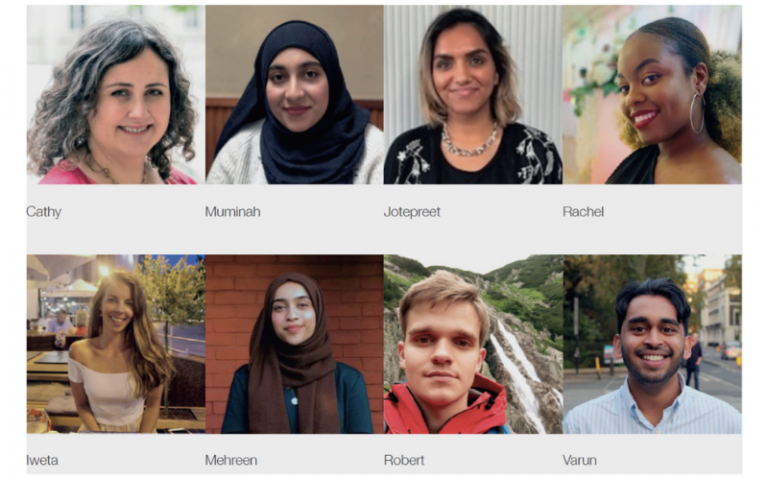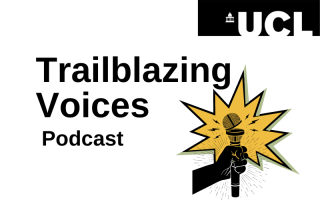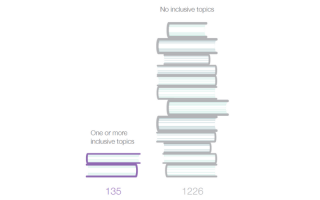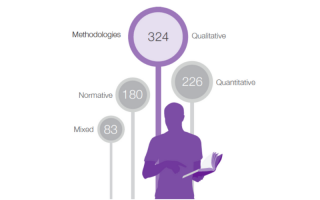Inclusive Curriculum Project
Our Mission
Given the diversity of UCL’s student body, the aim of this project was initially to gain some robust data about the diversity of teaching staff and reading lists in the Political Science Department, with special attention to the representation of women, people of colour, and critical, non-mainstream theories in our readings.
Why does UCL need an inclusive curriculum?
The BAME Awarding Rate Gap
According to the “Differences in student outcomes” study, conducted by the Office For Students, BAME (Black, Asian or minority ethnic) students are less likely than White students to be awarded first or 2:1 degrees in higher education. We see this problem in our own department and at UCL more generally.
A possible explanation for this gap is BAME students’ lack of academic role models both in terms of their teachers and the authors of the work they have the chance to read. Lack of engagement with the core concerns and histories of minoritised and marginalised groups in higher education might also lead to alienation, contributing to the awarding rate gap, and fostering a vicious cycle of discrimination of BAME narratives in academia.
Citation Gaps
Reading lists are the focal point of students’ learning experience in higher education, constituting a base for both their understanding of the degree, and their work within the field.
Thus, the lack of a range of authors, perspectives and approaches in the assigned readings will be reflected in students’ work.
Since citations may be used as a measure of research quality, many students are likely to cyclically cite the widely cited, mainstream works that appear in their reading lists in their own research.
Gaps in our curriculum therefore reinforce a vicious cycle of scholarly hierarchy within academia, which leaves little room for the work of women and BME scholars.
An Incomplete Education
A non-inclusive, eurocentric curriculum produces a singular and restrictive narrative, which allows little room for innovation. For students to be critical, well-rounded, and well-informed, to receive a complete education, an inclusive curriculum with a wide range of authors and perspectives is essential.
View the project's recommendations
Our Findings
Authors
We discovered an overwhelming reliance on readings written by White male authors. 71% of readings written by White men, 22% of readings written by White women, 5% of readings written by men of colour and only 2% of readings written by women of colour. This ignores the talent and scholarship that is produced by women and people of colour. By perpetuating the inclusion of predominantly White male voices, important scholarship is overlooked and disregarded.
Topics
We coded readings according to whether or not they included discussion of one or more of the following topics: gender, sexuality, race and ethnicity, or disability. We labelled as ‘inclusive topics’ for convenience.
We found that the topics of sexuality, gender, race and ethnicity and disability were relatively rarely discussed in our readings, with issues of sexuality and disability very rarely appearing on reading lists at all. Engagement with these areas can provide students with the knowledge and tools to understand the politics surrounding the issues which might affect them or their loved ones now or later in their lives.
Diversity of Ideas and Approaches
Through our study, we found that the vast majority of our readings take a mainstream, usually positivist, approach to knowledge, where “non-mainstream” was coded as:
- Critical theory
- Critical race theory
- Postcolonial and decolonial approaches
- Poststructural approaches
- Marxist approaches
- Feminist theory and approaches
- Queer theory
- Social model of disability
The voices of feminists, disability activist scholars, race theorists, and queer theorists are currently not well-represented in our curriculum - each arrow represents twenty readings. Only 17.5% of our readings would count as non-mainstream, if counted in this way.
More representation of different approaches and voices would make for a better-rounded syllabus and allow students to develop their own responses to these ideas, which tend to be of particular interest to students and scholars of colour and disabled and LGBTQ students and scholars. This is not to suggest that the ‘mainstream’ approaches are not valuable, but simply to propose that more diversity of ideas leads to a better educational experience.
Who Assigns Which Readings?
Our research shows that male lecturers set more readings with male authors. Women lecturers also set more readings by men than women, but, importantly, the proportion of women authors on their reading lists is a lot higher. Female lecturers also assign a much higher percentage of readings from non-mainstream approaches. This presents a powerful argument for why it might make sense to hire a more diverse faculty, both when it comes to gender and ethnicity, to guarantee a balanced and broad education for students at UCL.
Methods
We found great diversity in terms of the selection of both qualitative, normative and quantitative research methods in the readings we analysed. The majority of readings used qualitative research methods. Whilst there is a diversity in methodology, the vast majority of readings still adopt mainstream positivist and analytic normative approaches. This, as highlighted before, has consequences in terms of curtailing the breadth and depth of knowledge that students obtain.
Geographical Scope
We found a total of 298 case studies from 74 countries and all six continents. By far the most commonly analysed countries are the United States (76 cases; 25.5%) and the United Kingdom (54 cases; 18.1%). The only other two countries with over 10 case studies are India (14 cases) and Germany (13 cases). In contrast, there is a paucity of case studies from large parts of Africa, especially Western Africa, as well as Eastern Europe and South-East Asia. The concentration of case studies in the Global North is not encouraging, although the department’s three modules on International Development were, as chance would have it, not included in the sample. However, this would seem to be a clear invitation to develop other modules that would invite discussion and learning about large parts of the globe, as well as to add more diverse international examples where possible.
Who was involved in the project?
This project was led by Cathy Elliott who worked with a team of postgraduate and undergraduate students. You can find out more about them here.

 Close
Close




